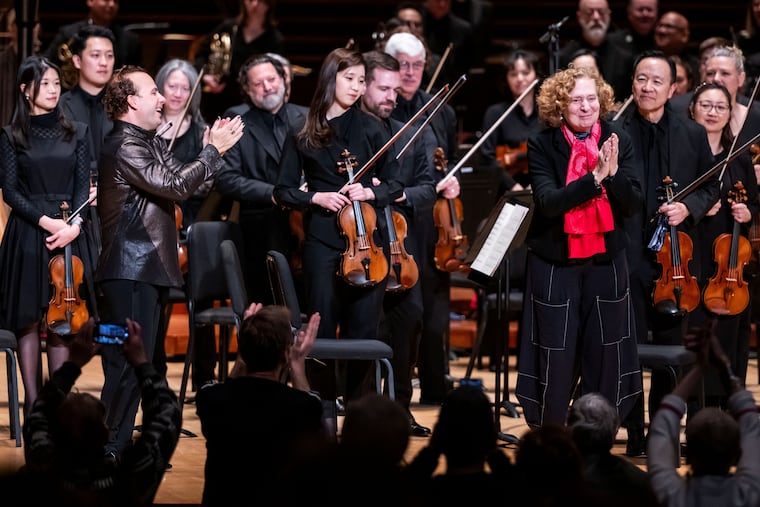Women composers take centerstage in Philadelphia Orchestra concert
19th century composer Louise Farrenc meets Montco native Julia Wolfe meets the formidable Hélène Grimaud

The challenges and triumphs of women composers over the past 200 years came into stark contrast at the enterprising Philadelphia Orchestra concert Friday at the Kimmel Center. The program — repeated Saturday — reflected a then-and-now awareness that would not have happened in concerts a decade ago. Indeed, the classical music world can evolve in conjunction with social issues.
The concert’s main attraction was inevitably the Brahms Piano Concerto No. 1 with the authoritative frequent guest Hélène Grimaud. But the less-familiar names championed by music director Yannick Nézet-Séguin — Louise Farrenc (1804-1875) and Julia Wolfe (b. 1958) — both headed toward the symphonic mainstream — illustrate opposite reactions to similar cultural undercurrents.
Though Farrenc was a high-profile composer and pianist, somewhat immune to the prevailing gender discrimination, she still slotted herself into the kind of music that was already happening. Her Symphony No. 1 in C minor, Op. 32 (1842) is much in the manner of Mendelssohn. That’s what music was in that era and that’s how Farrenc composed.
Much of her chamber music such as her piano quintets have an endearing personal touch, and truly ought to be standard repertoire. The Symphony No. 1, however, dutifully uses every compositional technique of her time though without a strong melodic profile. It’s a nice symphony. The opening clarinet solo and second movement waltz are more than nice. But the general impression is that of an inhibited composer.
No such notions stopped the irrepressible Wolfe. Growing up in Montgomery County, she was a teenage denizen of South Street and was schooled in the forward-looking University of Michigan in Ann Arbor. As a founding member of the downtown-Manhattan Bang on a Can composer collective, she has partly defined a movement rather than following it.
One never knows what she’s going to deliver, whether a big, multimedia Anthracite Fields premiered by Philadelphia’s Mendelssohn Club (and winning the 2015 Pulitzer Prize) or the purely instrumental 2023′s Pretty, a Philadelphia Orchestra co-commission that, according to the program notes, riffs not necessarily on beauty but the more ancient implications of the title, which is crafty and clever.
It’s steeped in minimalism, starting with three distinct layers — a central core that rocks back and forth, plus propulsive percussion and treble gestures that come and go like objects in orbit, well established before everything starts to blur. None of these elements are innately interesting but their development, both thematically and instrumentally, was riveting — the work of a rich creative mind having a blast, playing with traditional symphonic expectations with a gleefully series of false endings. I counted 15.
Wolfe’s minimalist works are often highly astringent, but since the Philadelphia Orchestra doesn’t do astringent, one heard an alluring progression of instrumental color. In other words, the orchestra ate it up. So did the audience.
Grimaud’s Brahms is a well-proven entity in the concert world, and with Nézet-Séguin, there’s a special chemistry with flexible tempos, expressively rounded phases but definite lack of sentimentality. She still makes the keyboard roar — as in the final moments of the first movement — but the territory that’s more distinctively hers is the tenderness to which she brings a clean elegance. All of her best qualities came together in the third-movement cadenza, which had great precision and depth of purpose.